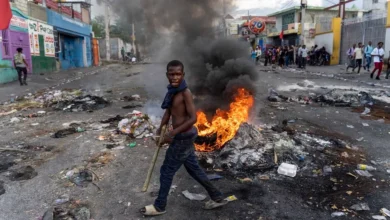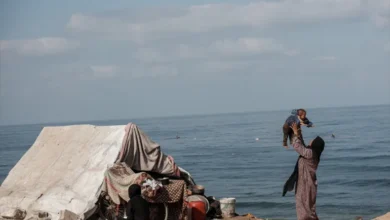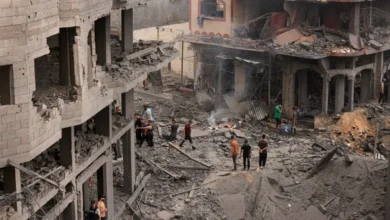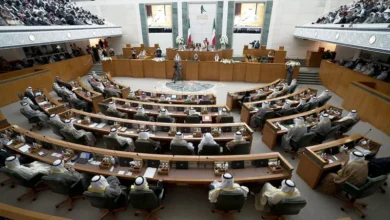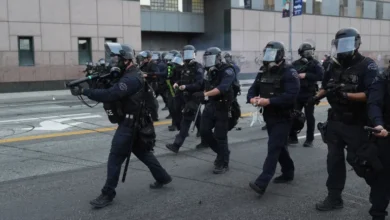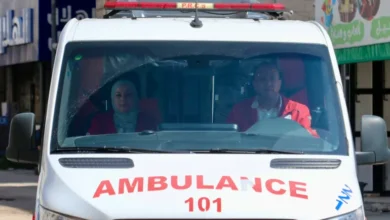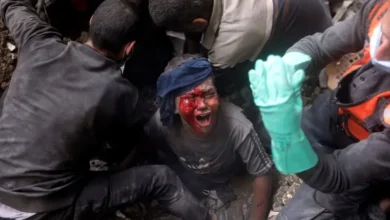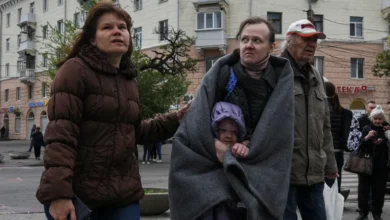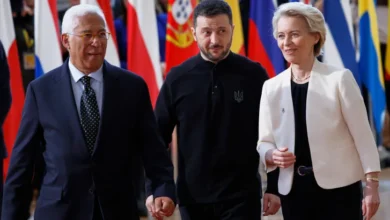What’s Donald Trump’s plan to ‘end’ Russia’s war on Ukraine?
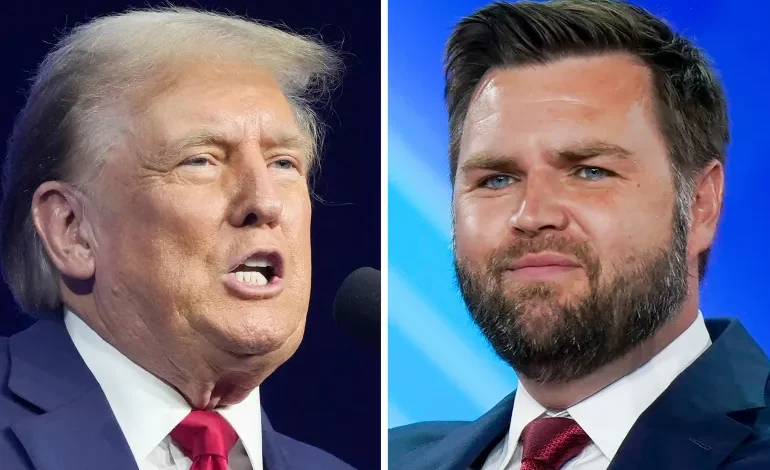
Donald Trump and Russia — the association goes back to the former president’s first run for the top job in the United States and accusations that the Kremlin worked to help him get into the White House in 2016.
Amid his current re-election campaign, Trump has repeatedly claimed he can quickly put an end to the Russia-Ukraine war, without presenting a detailed plan as the US presidential election draws near.
His running mate, JD Vance, has now presented — in a podcast — some details about what a second Trump administration vision for Washington’s future role in the conflict would look like.
Let’s take a look at the plan and what it would mean for everyone involved.
Where does Trump stand on Ukraine?
The former president has cited US policy towards Ukraine numerous times to blast the Democratic Party leadership, arguing that they have been funding and arming a large-scale, open-ended war that does not benefit the US.
Trump has claimed the war would have never started had he won the 2020 election, and has boasted of being able to end the war “in 24 hours”. He has presented no evidence to support either claim.
During the presidential debate against Vice President Kamala Harris last week, he said, if elected in November, he would “get it done before even becoming president” in January. But Trump suggested laying out the plan in detail would expose him in negotiations.
“I have a very exacting plan on how to stop Ukraine and Russia. And I have a certain idea, maybe not a plan, but an idea for China,” Trump said last week in a podcast interview with Lex Fridman. He later added: “But I can’t give you those plans because if I give you those plans, I’m not going to be able to use them. They’ll be unsuccessful. Part of it’s surprise.”
What’s the plan?
But while Trump has been reluctant to share details of his plans to “stop Ukraine and Russia”, his running mate was, recently, more forthcoming.
According to Vance, Trump would start negotiations with the Kremlin, Ukraine and European stakeholders if he wins the election with an eye towards achieving “a peaceful settlement”.
“And what it probably looks like is the current line of demarcation between Russia and Ukraine, that becomes like a demilitarised zone,” he told the Shawn Ryan Show in an episode released last week.
Vance did not discuss the location or the extent of the demilitarised zone, but emphasised that it would be “heavily fortified so the Russians don’t invade again”.
“Ukraine retains its independent sovereignty, Russia gets the guarantee of neutrality from Ukraine – it doesn’t join NATO, it doesn’t join some of these allied institutions. That is what the deal is ultimately going to look something like,” he said.
Vance, a former US marine, said “a lot of risks” would be involved if Washington were to help Ukraine take control of Crimea, which Russia annexed after an offensive in 2014.
“How many American lives would it cost to do that? And if the answer is more than zero then I’m out,” he said.
The prospective future vice president said he believes Trump could reach a deal swiftly because “they’re scared of him in Russia, they’re worried about him in Europe because they know he actually means what he says”.
What would all of that mean in action?
The outlines of the plan presented by Vance appear much closer to the vision presented by Moscow to end the war compared with the one favoured by Ukraine and NATO.
For one, he backs maintaining the current demarcation lines, which would mean that Ukraine would effectively have to cede control of some of its occupied territory.
Within months after starting its invasion of Ukraine in February 2022, Russia took control of parts of Ukraine, including areas in Luhansk, Donetsk, Kherson and Zaporizhia, holding referendums and installing officials loyal to the Kremlin.
Russia has taken military control of about 20 percent of Ukraine since 2014, stressing that any peace plan would have to recognise “the reality on the ground”.
Ukraine has said any peace deal must invalidate the Russian annexations of all its territory, which would include nullifying the annexation of Crimea and returning it to Kyiv’s control.
Ukraine has also been pushing hard for more funds and weapons, and to become a member of the Western military alliance. NATO has started Kyiv’s membership process, promising an “irreversible path” to enter the 32-member alliance.
Kyiv wants Russian officials to be prosecuted at an international tribunal as well.
What happens now?
The war between Russia and Ukraine shows no signs of stopping in the foreseeable future regardless of the election rhetoric in the US.
The Kremlin has also expressed pessimism about Trump’s claims of ending the war immediately, with spokesman Dmitry Peskov saying at the start of September that this sort of thinking falls within “the realm of fantasy”.
Meanwhile, Russia and Ukraine continue to fight in each other’s territory as the Russian military makes small gains in eastern Ukraine and Ukrainian forces persist with their offensive into the Kursk border region.
Russian leaders have refused to meaningfully withdraw troops and arms from Ukrainian territory to defuse the incursion into their soil, but have slowly mobilised to advance a counteroffensive.
